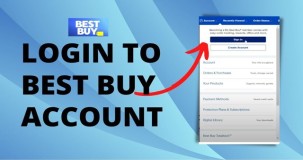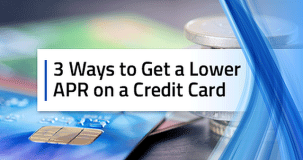 Best Credit Cards
Best Credit Cards
 Credit Report
Credit Report
 Credit Report
Credit Report
 Insurance
Insurance
 IT Services
IT Services
 Car Insurance
Car Insurance
 Best Credit Cards
Best Credit Cards
 Car Insurance
Car Insurance
 Credit Report
Credit Report
How do you design a newsletter? Designing a newsletter involves creating an appealing layout, choosing a suitable color scheme, incorporating relevant visuals, and organizing content in a clear and engaging manner.
Here are the key steps to designing a newsletter:
1. Define the purpose and target audience: Before starting the design process, it is crucial to clearly define the purpose of the newsletter and identify the target audience. Understanding the goals and preferences of your audience will help you create content that resonates with them.
2. Choose a suitable layout: The layout of your newsletter should be visually appealing and easy to navigate. You can choose from a variety of templates or create a custom design that reflects your brand identity. Consider using a grid-based layout to organize content and maintain consistency.
3. Use eye-catching headlines: Headlines are the first thing readers see when they open your newsletter, so it's important to make them attention-grabbing. Use bold and large fonts to highlight key messages and ensure they are easily readable.
4. Include compelling visuals: Visual elements such as images, infographics, and illustrations can greatly enhance the visual appeal of your newsletter. Make sure to use high-quality and relevant visuals that support the content and capture the attention of the readers.
5. Arrange content strategically: Place the most important information and call-to-action buttons above the fold (the visible area without scrolling). Use headers, subheadings, and bullet points to break down the content into sections, making it easier for readers to scan and consume the information.
6. Maintain consistency in branding: Use your brand colors, fonts, and logo consistently throughout the newsletter to reinforce brand recognition. Consistency in branding helps establish trust and familiarity with your audience.
7. Keep it concise and skimmable: Newsletters should not be overly long or overwhelming. Keep the content concise, focus on the essential information, and use shorter paragraphs. Incorporate white space to improve readability and allow readers to skim through the content.
8. Add interactive features: Create an interactive experience by including clickable buttons, social media icons, and interactive polls or surveys. This not only increases engagement but also allows readers to easily navigate to your website or social media profiles.
9. Test and optimize: Before sending out the newsletter to your audience, test it across different devices and email platforms to ensure compatibility and optimal display. Monitor key metrics such as open rates, click-through rates, and unsubscribes to gain insights and make improvements for future newsletters.
10. Include a clear call-to-action: End your newsletter with a clear call-to-action that encourages readers to take a desired action, such as visiting your website, making a purchase, or signing up for a webinar. Make the call-to-action prominent and make it easy for readers to follow through.
In summary, designing a newsletter involves defining its purpose, selecting a suitable layout, using eye-catching headlines and visuals, arranging content strategically, maintaining branding consistency, keeping it concise and skimmable, adding interactive features, testing and optimizing, and including a clear call-to-action. By following these steps, you can create a well-designed newsletter that effectively engages your audience and achieves your marketing goals.
A newsletter design should include key elements such as a catchy header, engaging content sections, clear call-to-action buttons, relevant images or graphics, and contact information or social media links.
2. How can I make my newsletter design visually appealing?To make your newsletter design visually appealing, you can use a combination of colors that align with your brand, choose a readable font, incorporate white space for better readability, and use eye-catching visuals or illustrations that enhance your content.
3. What is the best format for a newsletter design?The best format for a newsletter design is usually a PDF or an HTML file. While PDF ensures that your design remains intact across different devices, an HTML format allows for more interactive features such as clickable links, embedded videos, or animated elements.
4. How can I ensure my newsletter design is mobile-friendly?To ensure your newsletter design is mobile-friendly, you should use a responsive template or ensure that your design is optimized for smaller screens. This can include using a single-column layout, resizing images to fit mobile screens, and testing your design on different devices and email clients.
5. What are some common mistakes to avoid in newsletter design?Some common mistakes to avoid in newsletter design include overcrowding the layout with too much content, using too many different fonts or colors that create a visual chaos, neglecting to proofread for grammar or spelling errors, and not optimizing your design for accessibility.
 LATEST ARTICLES
LATEST ARTICLES

Do rental cars come with liability insurance Texas?

Do you get cheaper insurance if you call?

Do most people in Florida have flood insurance?

Is it better to own an Allstate or State Farm?

Is it better to have 80% or 100% coinsurance?

Is home insurance the same as property insurance?

How do I link an email to dynamics?

Is Medicare more expensive than Obamacare?

Is HSA or FSA use it or lose it?

Does credit one bank report to Equifax?

Does disputing a collection restart the clock?

Does closing a secured credit card hurt your score?

How do I pay my Best Buy account?

How do I lower my APR rate?

How do I make a balance transfer offer?

What are the challenges of being an insurance agent?

What are the pros and cons of paying off a loan quicker?

What are the 5 key challenges facing the insurance industry?
 POPULAR ARTICLES
POPULAR ARTICLES

Do rental cars come with liability insurance Texas?

Do you get cheaper insurance if you call?

Do most people in Florida have flood insurance?

Is it better to own an Allstate or State Farm?

Is it better to have 80% or 100% coinsurance?

Is home insurance the same as property insurance?

How do I link an email to dynamics?

Is Medicare more expensive than Obamacare?

Is HSA or FSA use it or lose it?

Does credit one bank report to Equifax?